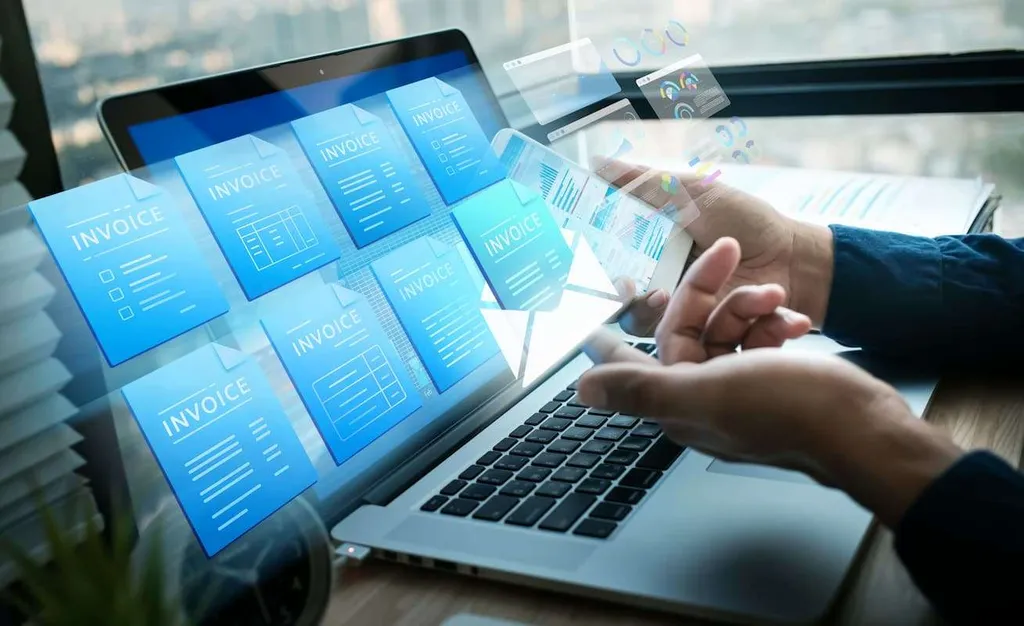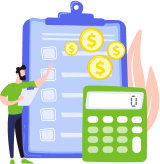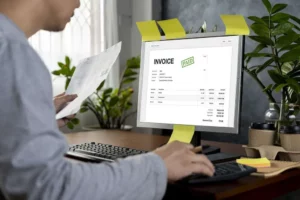Accounts payable (AP) has always been a core aspect of business operations. But in today’s digital world, requirements have grown. Vendors now demand quick payments, often with zero billing errors. To meet these new demands, many businesses have turned to AP automation software to simplify their processes. Despite this, AP remains a complex task that still needs manual oversight in some cases. One major challenge for common invoice processing is handling varying formats. Companies often develop custom solutions to address this, but it can take months to implement before teams start seeing benefits. AI invoice processing comes to the rescue.
How AI Improves Invoice Processing
AI invoice processing does more than just optimize the way you enter information. It may facilitate the workflows and make sure that your firm stays compliant. Without a doubt, AI creates digital transformation—let’s talk about it in detail.
Intelligent Data Extraction
AI-driven OCR combines optical character recognition, natural language processing (NLP), and ML to dynamically spot and take out critical invoice information like brand titles, line items, taxes, and other terms. Unlike traditional OCR, which struggles with unstructured formats, AI-ruled systems use contextual recognition to convert extracted pieces of information into structured outputs compatible with financial systems. With the help of it, you can be confident that your purchase order (PO) corresponds with the appropriate invoice information.
Automated Invoice Checking
AI validation also incorporates rule-based logic and machine-learning invoice processing. Its aim is to stick to compliance and minimize the need for you to do things manually. As an example, AI billing routes invoices that exceed specific amounts, such as those over $10,000, to senior approvers. It also cross-references vendor information with internal records to identify unauthorized suppliers.
Machine Learning for Fraud Detection
AI also spots irregular invoice patterns and helps prevent fraud. It analyzes past data and flags anomalies, like duplicate invoices or incorrect vendor details. More companies, especially in finance, are adopting AI fraud monitoring instruments. Mastercard’s Decision Intelligence technology monitors spending patterns to identify fraud. AI considers the context of transactions, cutting down on false declines. IBM predicts AI could reduce false declines by as much as 80%. In addition, proper coding within the system means that each invoice is categorized according to the correct account.
What Is the Difference Between AI and RPA?
Artificial intelligence acts like the brain of the operation. It doesn’t just follow instructions — it analyzes messy, unstructured data (emails, images, or voice recordings) to spot hidden trends and patterns. Over time, it adapts and improves. This “learning” skill lets AI for accounting tackle complex tasks.
Robotic process automation, on the other side, is all about efficiency. It’s designed to handle repetitive, rule-based chores — like filling out forms, moving files between systems, or logging into accounts. Unlike AI, RPA doesn’t “think” or learn on its own. Instead, it relies on humans to define the steps it should take, then executes them flawlessly and at scale.
Dynamic Duo: RPA & AI in Accounts Payable
When businesses first go into automation, they often start with RPA. But real-world invoices rarely play by the rules. Formats vary wildly — scanned PDFs, handwritten notes, or even emails with attachments. That’s where AI invoice processing tools step in as the problem-solver. It trains optical character recognition (OCR) to interpret messy documents, then pairs with RPA to turn raw data into actionable steps.
AI’s flexibility bridges the gap between chaos and discipline, while RPA’s precision gives accuracy at scale. Together, they convert automated invoice processing from a headache into a well-established workflow. AI might decode a blurry image, and then RPA could auto-populate the system and highlight discrepancies. Alone, they’re useful tools. Together, they make accounts payable faster and smarter.
Benefits of AI-Driven AP Automation
AI-powered accounts payable automation is changing the game for finance departments. It smooths workflows and diminishes mistakes. Research shows that businesses using automated invoice processing lower their costs by an average of 80%.
Improved Efficiency
Advanced AP automation speeds up invoice approvals. Manual workflows tend to slow things down with repetitive tasks and human delays. AI invoice processing solves this by instantly capturing and handling invoice data. It boosts speed and helps businesses stay on top of financial commitments.
Cost Savings
Automated accounts payable systems cut administrative costs as they take away manual data entry and eliminate paper-based tasks. AI-driven tools also keep cash flow steady — with it, the payments go out on time, and there are no late fees and extra charges. In the long run, these cuts add up. They give businesses a smarter way to handle their finances.
Enhanced Compliance and Security
AI-driven AP systems build thorough audit trails. Every invoice step gets logged automatically, with zero chance of errors. Plus, AI strengthens data security—it shields financial details and spots unusual activity early to help you stay safe from fraud.
Implementing AI Invoice Processing
Machine learning invoice processing uses NLP and OCR to get data from invoices. The result? Less manual work, fewer mistakes, and faster approvals. Advanced AI invoice processing adapts to different formats and keeps getting smarter.
Choosing the Right AI Solution
Go for one that pulls data accurately, automates workflows to fit your needs, and connects easily with other tools. Quick payment handling and deep financial insights are a must. The best options run with little manual effort and grow as your operation expands.
Integration with ERP Systems
AP-ERP integration lets your systems sync effortlessly. With the proper configuration, AP tools can pull account details and push invoice data straight into your ERP. Take Joensuu (a city in Finland). They rolled out AI-powered invoicing, automating 80% of their 50,000 invoices yearly and reducing AI invoice processing times. If you’re moving from manual to automated AP, start with clean, complete data. Set up clear, standardized workflows from invoice capture to payment approval.
Overcoming Common Challenges
AI invoice processing is highly efficient, but it still needs a human touch. In the perfect world, your AI does the routine work, and your workers improve it through judgment and ethics. If you regularly review the system’s performance, you can make it more accurate.
For financial professionals, the work doesn’t stop either. They must learn how the technology works, how to read system outputs, and when to intervene. The key to success is understanding clear rules for when human decisions should override AI. It is especially important in situations that require context and experience.
Future of AI in AP Automation
Blockchain could shake up record-keeping with secure, decentralized tracking. It’s bound to make invoices more legitimate and keep compliance tight. AI is also stepping up in AP forecasting. It helps businesses stay ahead on cash flow. And with NLP getting sharper, pulling data from unstructured invoices will only get easier. Let’s see what extra trends we can expect in the long run.
Emerging Trends in AI-Driven AP Processes
New technologies not only foster processes like AI invoice processing. Business owners can use it in a variety of ways:
- More businesses rely on AI chatbots to tackle AP tasks like invoice approvals, supplier interactions, and payment inquiries. These bots cut down on manual work because they answer routine questions instantly. They also flag tougher cases for your oversight.
- Predictive analytics is also changing the game. It helps companies handle cash flow. This tech spots payment trends, supplier needs, and possible delays. AI invoice processing tools suggest early payment discounts and warn about late vendor payments before they become a problem.
AI will keep making AP faster and more cost-effective as these innovations progress.
Expanding AI Capabilities Beyond Invoice Processing
AI may not only handle your financial statements but also help your business in other ways. Let’s take a look:
- With its skill for analyzing massive data sets, AI can predict revenue shifts, expenses, and cash flow trends before they happen.
- AI sorts through supplier data and ranks vendors based on past pricing, delivery speed, and risks. Apex Logistics used it to spot a supplier with a 95% on-time record, eliminating a potential $700K loss.
- AI tracks market shifts, fine-tuning procurement strategies to lock in the best deals while keeping supplier relationship management strong.
Leveraging AI helps organizations anticipate risks and seize new financial opportunities.
Conclusion
AI invoice processing is changing the way we do business accounting. The main advantage is efficiency and better compliance. Artificial intelligence will not replace an accountant, but it will quickly process invoices and other data. When you set up your AI assistant, you can lay the foundation for trouble-free financial management. As an example, when you start paying early and without errors, you will have fewer problems with suppliers, and this will pave the way for better contract terms.
However, even with invoice processing automation, accurate bookkeeping and financial reporting remain essential. That’s where BooksTime comes in. Our expert accountants handle your reports, bookkeeping, and financial records, ensuring everything stays accurate and compliant.

















